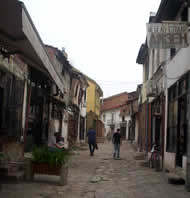  Old Bazaar Old Bazaar
Skopje’s old Bazaar has existed for more than 1,000years. Some of its buildings suffered severe damage in the 1963 earthquake. It comprises buildings dating from different periods and cultures: churches, mosques, inns, baths, a bezisten (covered bazaar), many craftsmen’s shops, old buildings, and small shops with displayed goods on the streets. Once there, you will be charmed by the spirit of the Orient.
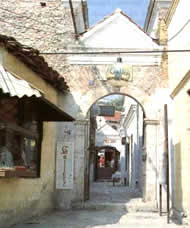  Bezisten Bezisten
The object has four gates, each facing a different side of the world. Three alleys enable free movement within the entire inner space, which comprises two separate buildings. Initially, it was a place where linens were sold. Its name was derived from the Arabic word "buzz" meaning linen, and the Persian word "is tan" meaning place for selling goods. According to the inscription on the east gate, the Bezisten was built in 1445 by Ishak Bey and renovated in 1899. Skopje Bezisten is covered with six domes and bears resemblance to the bezistens in Bursa, Sarajevo, Thessaloniki, Seres, Beyshehir.
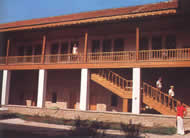  Kapan An Kapan An
The name “kapan” is derived from the Arabic word "kabban" meaning big scale. Kapan An was built in the 15th century by Isa Bey, the son of Ishak Bey. It was constantly damaged over the years: in the earthquake of 1555, in the fire of 1689, and in the 1963 earthquake. Built during the Ottoman period, the inn had 24 rooms, which mainly accommodated Muslim travellers. Therefore, there was a bath at one of the entrances where the guests went to wash their bodies before going to pray in the mosque located next to the other entrance.
Suli An
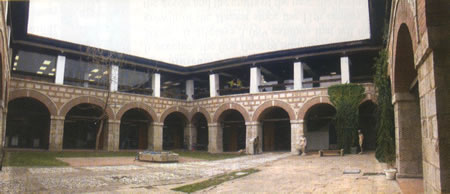
The name of this inn was presumably derived from the Arabic word "suli an" meaning “inn by the water,” because of the river Serava, which flowed by the main entrance. The inn was built by Ishak Bey in the 15th century and given to Aladza Mosque. The porch was supported by 18 stone pillars connected with arches, behind which were 27 rooms, with additional 30 rooms on the upper floor. Today, The Museum of Skopje Old Bazaar, the Faculty of Art, and the Gallery of Contemporary Art are all situated in Suli An.
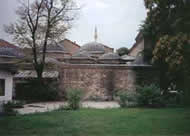 Cifte Amam Cifte Amam
This Turkish bath, first mentioned in a document from 1531, had two separate entrances - for men and women. Its name was derived from the Turkish words "cifte amam" meaning "double bath." The builders used carved stones, bricks, and mortar. Later, the rooms of the bath were used mainly as a warehouse. In 2002, the interior of Cifte Amam underwent overall reconstruction and the premises have since been used for installing permanent or temporary exhibitions.
Kursumli An
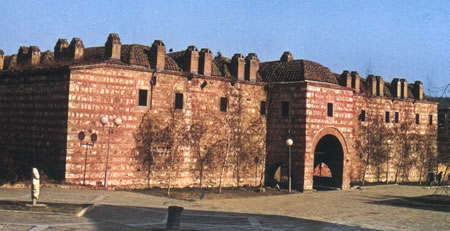
This inn, built in 1540, had 60 rooms to accommodate guests staying overnight and space for keeping 100 horses. The building was used as an inn until 1877, when it was converted into a prison. Because of its excellent acoustics, today the inn stages concerts and drama plays during the summer months.
Daut Pasha Amam
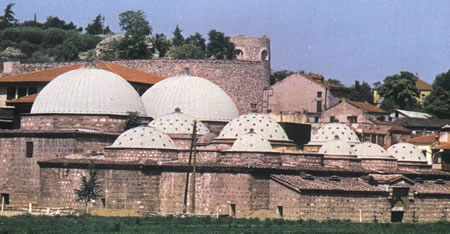
This bath, today’s National Gallery of Macedonia, is a masterpiece of the monumental Islamic profane architecture in Macedonia. It was built in the second half of the 15th century, when the Grand Vizier of Rumelia lived in Skopje (1489-97).
After World War II, it underwent reconstruction and since 1951 the bath has been used as a venue for art exhibitions.
back |